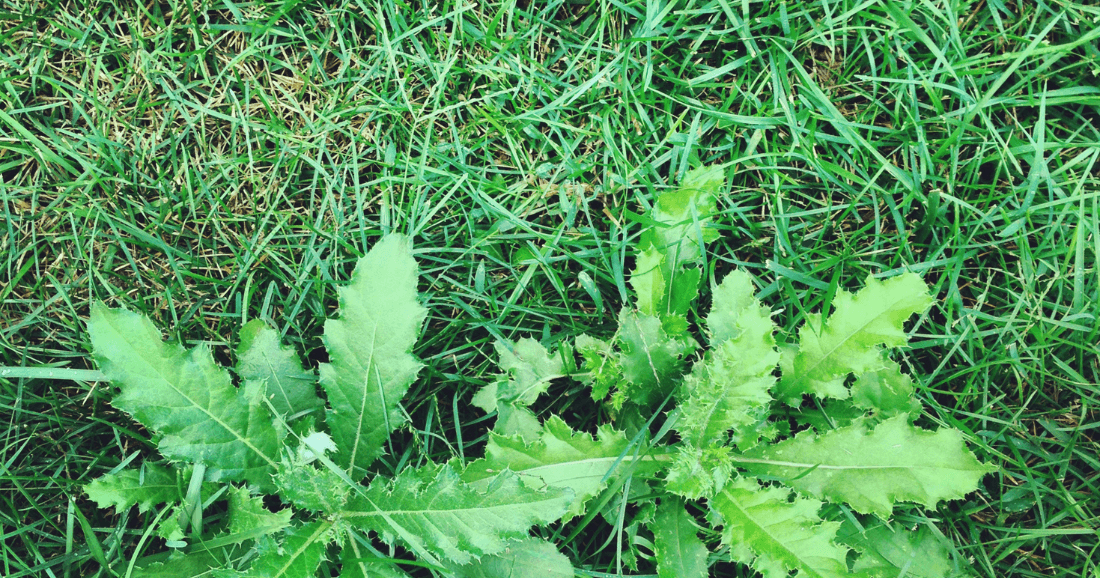Weeds in your lawn can be a real pain, taking over and making it look unsightly. Fortunately, there are several methods that you can use to banish them for good.
In this article, we'll explore some of the best ways to eliminate lawn weeds, from prevention and treatment to organic and chemical options.

Understanding Lawn Weeds
Before we dive into the methods of getting rid of lawn weeds, it's important to understand what they are and how they grow.
Lawn weeds are unwanted plants that can grow in your grass, taking over the space and making your lawn look unkempt. They can be annual or perennial and can spread through seeds, roots, or both.
Prevention Is Key
One of the best ways to keep weeds from taking over your lawn is to prevent them from growing in the first place. There are several things you can do to prevent weeds, including:
- Mow your lawn regularly: Keep your grass at the height of 2-3 inches to prevent weeds from getting too much sunlight.
- Water your lawn deeply: This will encourage your grass to grow deep roots, making it harder for weeds to take hold.
- Fertilize your lawn: A healthy lawn can better fight off weed growth.
- Apply pre-emergent herbicides: These herbicides prevent weed seeds from germinating, making it harder for them to grow.

Chemical Weed Control
Chemical weed control is another option for getting rid of lawn weeds. There are two types of herbicides: selective and non-selective.
Selective herbicides target specific types of weeds, while non-selective herbicides kill all plants. When using chemical weed control, be sure to read and follow the instructions on the label carefully.

Organic Weed Control
If you're looking for a more natural way to control weeds, organic options may be a good choice. Some methods of organic weed control include:
- Hand pulling: Simply pulling the weeds out by hand can be effective for small areas.
- Mulching: Covering the soil with mulch can prevent weed growth by blocking out sunlight.
- Vinegar: Applying vinegar to weeds can kill them, but be careful not to get it on your grass or other plants.

A Step-by-Step Process to Remove Weed
In this section, we'll guide you through the process of removing weeds step-by-step. We'll cover everything from identifying the weeds in your yard to choosing the best removal method and disposing of the weeds properly.
By the end of this process, you'll have the knowledge and tools you need to remove weeds effectively and keep them from coming back.
Step 1: Gather the Necessary Tools
Before you start removing weeds, you'll need to gather a few basic tools. Depending on the removal method you choose, you may need different tools, but the following items should cover most situations:
- Gloves
- Trowel
- Pruning shears or scissors
- Weed puller or weeder
- Herbicide (optional)
Having the right tools will make the weed removal process much easier and more efficient. Make sure your tools are clean and in good condition before you start.
Step 2: Identify the Weeds
The first step in removing weeds is to identify them. Different types of weeds require different removal methods, so it's essential to know what you're dealing with. Weeds fall into two categories: annual and perennial.
Annual weeds grow and die in one season and are typically easier to remove than perennial weeds, which come back year after year. Some common annual weeds include crabgrass, chickweed, and foxtail. Perennial weeds include dandelions, thistles, and bindweed.
Identifying weeds can be challenging, especially if you're not familiar with the different types. You can use a plant identification app or consult a gardening guide to help you identify your weeds accurately.
Step 3: Choose Your Removal Method
Once you've identified your weeds, you can choose the best removal method for your situation. The four most common removal methods are pulling weeds by hand, digging weeds out with a trowel, cutting weeds at the base, and killing weeds with herbicides.
Pulling weeds by hand is the most straightforward and eco-friendly removal method. To do this, put on your gloves and grasp the weed as close to the ground as possible. Pull the weed up and out of the soil, being sure to remove as much of the root as possible. Discard the weed in a compost pile or dispose of it in the trash.
Digging weeds out with a trowel is a good option for weeds with deep roots or those growing in tight spaces. Use the trowel to dig around the base of the weed, being careful not to damage nearby plants. Once you've loosened the soil, use your hands to pull the weed out by the roots.
Step 4: Cutting Weeds at the Base
Cutting weeds at the base is an effective removal method for weeds with tough or woody stems. Use pruning shears or scissors to cut the stem as close to the base as possible.
This method won't remove the roots entirely, but it will prevent the weed from growing back for a while.
Cutting weeds at the base is best for annual weeds that are easy to control and for removing weeds growing in decorative gravel or rocks.
However, it's not recommended for perennial weeds or those growing in lawns or other areas where you want the soil to remain undisturbed.
Step 5: Killing Weeds with Herbicides
Killing weeds with herbicides is a popular removal method for larger or more stubborn weeds. Herbicides work by disrupting the weed's growth or killing it outright. There are two types of herbicides: selective and non-selective.
Selective herbicides target specific types of plants and are commonly used on lawns and gardens.
Non-selective herbicides kill all plants they come in contact with and are useful for weeds growing in areas where you don't want any vegetation to grow, such as driveways or sidewalks.
When using herbicides, it's essential to follow the instructions carefully and wear protective gear, such as gloves and a mask. Herbicides can be harmful to pets and wildlife, so be sure to keep them away from treated areas. It's also important to choose an herbicide that's safe for the plants you want to keep in your yard.
Step 6: Disposing of Weeds
Properly disposing of weeds is essential to prevent them from re-rooting or to spread their seeds. If you're adding weeds to your compost pile, be sure they haven't gone to seed, as the seeds can survive the composting process and germinate later.
If you're disposing of weeds in the trash, be sure to place them in a sealed bag to prevent them from spreading.
If you're dealing with weeds that have gone to seed, it's best to dispose of them in the trash rather than composting. You can also use a weed burner or torch to kill the seeds before disposing of the weed.
Bonus Tip: Weed Removal AfterCare Guide
Now that you've put in the effort to remove them, it's important to take care of your soil and plants so that they can thrive.
One way to ensure your soil stays healthy is by using Humic Elite PG, an organic soil conditioner. This liquid formula is made with premium humic acid, which has been proven to significantly improve soil health and enhance crop production.
Humic Elite PG works by increasing soil microbial activity, improving nutrient availability, and promoting root growth. This results in lush, green grass, robust crops, higher yields, and healthy plants. And the best part?
By using Humic Elite PG, you can save up to 35% on fertilizer usage, which means less unused fertilizer in our waterways and more savings in your pocket!
Frequently Asked Questions
Are there any environmentally friendly ways to control lawn weeds?
Yes, there are many environmentally friendly ways to control lawn weeds, including hand weeding, using organic herbicides, and promoting healthy soil through the use of compost and natural fertilizers.
Can I use herbicides to control lawn weeds?
Yes, herbicides can be an effective method of controlling lawn weeds, but it's important to choose the right product and use it safely and correctly to avoid damaging your lawn or the environment.
When is the best time to control lawn weeds?
The best time to control lawn weeds depends on the type of weed and the control method you plan to use. In general, it's best to treat weeds when they are actively growing and before they have a chance to flower and produce seeds.
Conclusion
Lawn weeds can be a frustrating problem for homeowners, but with the right knowledge and tools, they can be banished for good.
By identifying the type of weed and choosing the appropriate control method, you can effectively get rid of weeds while maintaining a healthy and beautiful lawn.
It's important to take preventative measures to reduce weed growth, such as proper mowing and fertilization, and to consider environmentally friendly options for weed control. Remember to always use herbicides safely and correctly to avoid damage to your lawn or the environment.

